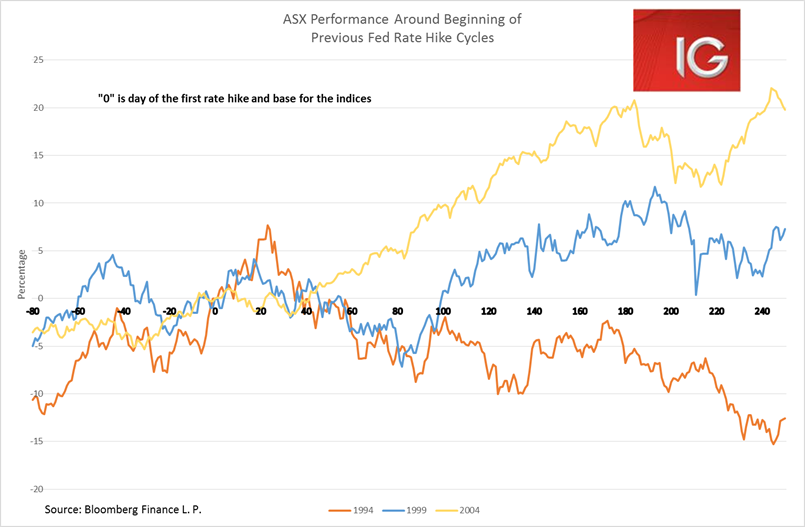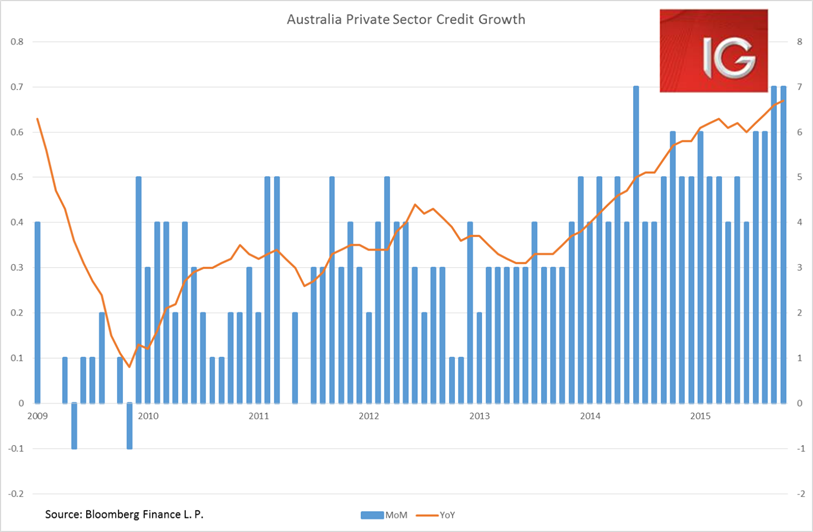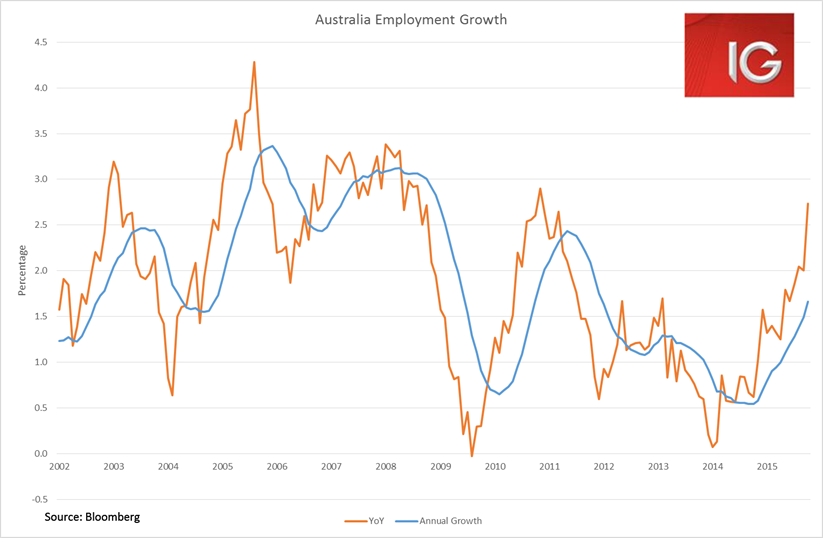“History doesn’t repeat itself, but it does rhyme” (Mark Twain). This may well be holding true for the Aussie dollar in the lead up to the beginning for the first rate hiking cycle seen by the US Federal Reserve since 2004.
In the past 40 years there have only been five rate hiking cycles by the Fed. Since the first rate hiking cycle of this period in 1977, the world and especially the financial world has changed immeasurably. Nonetheless, when looking at the performance of the Aussie dollar around the previous Fed rate hikes there has been quite a robust pattern. In the five previous rate hiking cycles (1977, 1986, 1994, 1999 and 2004) the Aussie dollar has consistently strengthened in four of them. Even in 1977, a number of years before the Hawke government freely floated the Australian dollar in December 1983, there was a clear discernible strengthening of the Aussie dollar over the following year.
What these findings make clear is that much of the rally in the US dollar around the rate hiking cycle happens before the actual rate hikes begin. By the time the first rate hike occurs, markets have usually fully priced in the rise of the US dollar, and indeed the best course of action often seems to be “sell the fact” once it has occurred.

The beginning of a rate hiking cycle has usually not been a problem for the S&P/ASX 200 either:

However, with regards to asset allocation in the ASX, this distinct historical trend does question whether the strong performance of those famed “USD earning” stocks can continue. If a Fed rate hike does occur in December, it could spell the end of the favourable FX-enhanced earnings for a number of firms.
As you can see in the chart, the USD earners really started to strongly outperform the index in August 2014. And they have clearly rallied far stronger than the index as a whole since the rebound at the beginning of October. The question is once the first rate hike has happened this could spell the end of their almost year and a half run.

There are clear historical precedents for why the Aussie dollar may rally after the Fed rate hike, however there are a number of contemporary reasons why this may well occur again. The other factors that have been keeping the Aussie dollar firmly above the US$0.70 level have been a noticeably improved domestic economy in Australia. While the slowdown in China has seen mining-related capital expenditures decline at a rapid pace, other elements of the Australian economy have significantly improved in the second half of 2015. The non-mining sectors of the economy have responded well to the lower Aussie dollar and its corresponding increased price competitiveness. This has greatly helped the services sector, with tourism in particular benefitting strongly.
The evidence for this turnaround is made most plainly in the strong performance of employment and credit growth.
The recently released ABS aggregate financing data showed that private credit is now growing at 6.7% year-on-year, its fastest rate since December 2008.

Employment growth (despite some reservations over the consistency of the data) is also indicating a marked turnaround in the fortunes of the Australian economy. Employment is now growing at 2.7% year-on-year, its fastest rate since November 2010. Consistency at elevated levels of employment growth will no doubt be key, but a few more months of +2% year-on-year employment growth could see us saying goodbye to the +6% unemployment rate in this cycle – an even better performance than the RBA forecasts.

The historical precedents and contemporary domestic factors do increasingly point to a much stronger performance of the Aussie dollar over the coming months than many had been expected. Those still calling for the Aussie dollar to drop below the US$0.65 mark may need to readjust their forecasts.
